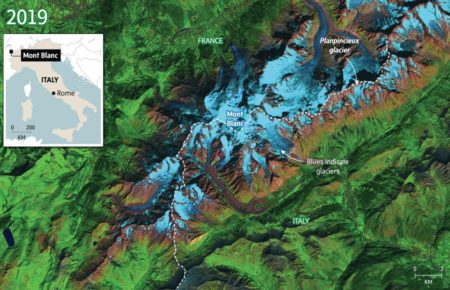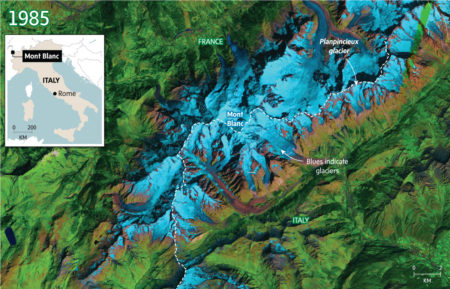October 31, 2019 – You don’t often think of geology as a science focused on the future because for the most part, it is not. In my early days in university, I studied geology and geophysics because I was interested in Earth’s past and the processes that shaped the physical planet we see today. I studied continental drift, attended a geology lab where we studied different types of rocks and minerals, and I learned about geomorphology, the forces that shape the Earth’s surfaces. Eventually, I switched my major to study the history of the people on the surface rather than what lies on it and shapes it, and what is hidden beneath.
But geology has very much been at the front of mind in the world of climatology and those looking at the impact of global warming on Earth surfaces. Glaciation and its processes have always been studied by geologists. But now we have de-glaciation of alpine and polar regions, a phenomenon not previously observed at the current scale by those who study the field.
In today’s Globe and Mail, an article covering more than two pages of the first section describes the imminent collapse of the Planpincieux Glacier on the flanks of Mont Blanc, the highest mountain in the Alps. Data collected from radar reveal dangerous movement in the glacier amounting to an average of 50 centimeters (19.6 inches) daily. That may not seem like a lot but in the world of glaciation, the Globe reporter describes it as “Ferrari speeds.” When an alpine glacier begins to move downhill, its mass becomes destabilized.
On the Italian side of the mountain (it shares it with France) the organization Fondazione Montagna Sicura (Safe Mountain Foundation), has been monitoring Planpincieux. Roads below the glacier’s front are now closed as 250,000 cubic meters (more than 8.8 million cubic feet) of the glacier appears to be an imminent danger to those living beneath it.
When a fracture first appeared on the Planpincieux’s surface in August, daily monitoring began. In October the fracture had expanded to 150 meters (nearly 500 feet) in length, 20 meters (65 feet) in width, and 10 to 15 (32 to 50 feet) meters in depth. Below the fracture, approximately one-third of the glacier was picking up speed in its slide down the mountainside. Readings on October 13th showed the rate of slide at 30 centimeters daily (almost 12 inches) and 45 centimeters (almost 18 inches) on October 25th.
It is geological information like this that is driving European Union members to form a pan-European geological service within a larger multi-country initiative labeled Horizon Europe. The new European Geological Service combines information and research from 45 national geology agencies and survey organizations in 32 countries to share data and expertise on things geological happening at the surface or below it throughout the continent.
The type of information to be shared covers a wide range of geosciences including raw materials, groundwater distribution, geothermal energy, and carbon capture and storage (CCS) potential. In creating the new service members note that geospatial information does not stop at borders. By combining resources, therefore, the 32 member countries will produce consistent data and promote equitable and sustainable use of subsurface resources and materials, share reporting on changes to geomorphological phenomenon such as glaciers on the surface, and will create shared expertise in the fight to mitigate global warming.










